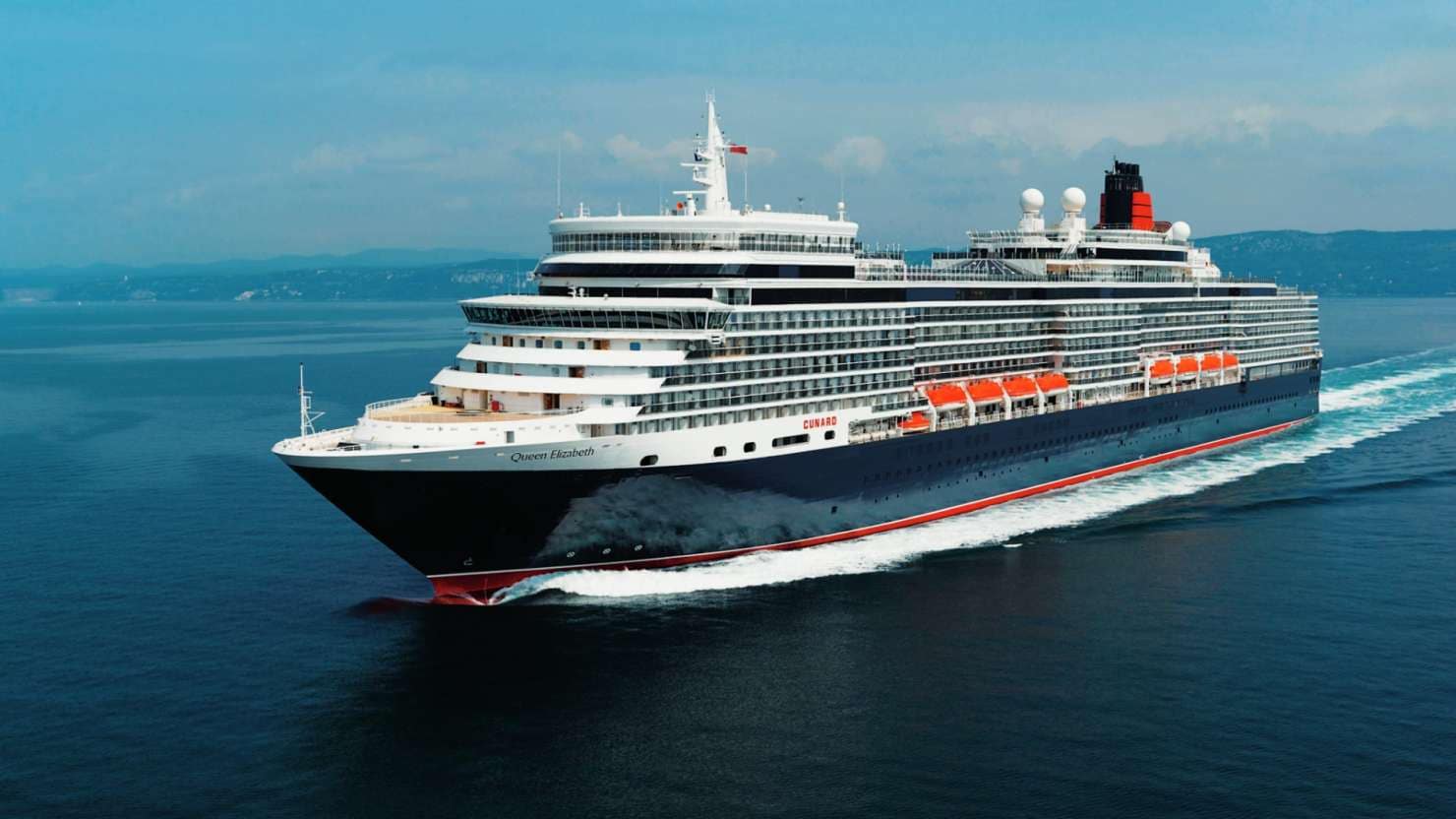Our guide to Barbados
Discover Cunard destinations

サウサンプトンを出発してケープタウンに向かうクルーズでは、アフリカ西海岸を航行できると思うとわくわくしました。空港で列に並んだり狭い飛行機に何時間も押し込められる心配がなく、昔ながらのスタイルで船に乗り、何週間もかけて目的地に向かうのです。
ただし、ケープタウンまで17日間かかるというのが少し心配でした。退屈するのではないだろうか。ストレスがたまるのではないだろうか。しかし、運とキュナードを信じて出航しました。
私が乗船したのはキュナードのクイーン・エリザベスでした。とてもきれいな船で、女性船長であるインガー・トーハウガ船長は、フェロー諸島出身の方でした。
イギリス人男性が、「彼女は船を停泊できるのか?」「航路を間違えたりしないか?」などと、昔の時代のようなことを 言っているのをよく聞きました。このように時代の波に乗り遅れた人たちが、誰も医療的な緊急事態に陥らないことを願っていました。この船の船医もオークニー諸島出身の女性だからです。私たちは船内で迷うことはありませんでした。それに船長は落ち着きがあり自信に満ちた声の持ち主だったため、彼女の毎日の船内放送は、最も緊張したお客様にも安心感を与えたに違いありません。荒れたビスケー湾さえもスムーズに航行し、すべて期待通り、適切な対応でした。
私たちは冬の太陽を求めて、テネリフェ島、グラン・カナリア島、マデイラ島へ航海しました。最初の2つは想像していた通りスペインらしい場所、そして庭園で有名なマデイラ島は、いつも通りポルトガルらしい落ち着いた雰囲気を漂わせていました。スコットランドとイングランド同様、ここの島々もお互いに近いながら、それぞれ趣が全く異なりました。アフリカの海岸沿いの航海を続けるにつれて、気候は暖かくなり、アフリカの強い太陽への露出に関する警告がどんどん増えていきました。
セントヘレナ島の近くも通りました。島を訪れる予定でしたが、天候が悪くて寄港できず。多くの資金が投資された島の空港の開業が脅かされているのも、似たような気候条件が原因なのでしょう。そこで、船は南大西洋にある大きな岩の周りを航海しました。ここは、現代のナポレオンを閉じ込め、逃亡の望みを絶つには絶好の場所なのです。
航行中にさまざまな美しい海鳥やトビウオを見た後、アフリカ初の寄港地、ナミビアのスケルトンコーストに到着しました。「それが本当のアフリカですよ。」ウォルビス・ベイから海岸沿いをドライブした時に、ガイドが言っていた言葉です。

アザラシ、ペリカン、フラミンゴなどの動物を見ました。砂漠には巨大な砂丘があり、勇敢な人たちが柔らかい砂を登ることに挑戦。1歩進んでは2歩下がり、それでも最後には頂上まで登りました。この砂漠の先には、南アフリカでジャーマンタウンとして知られているスワコプムントがあります。ドイツ風の黒と白のハーフティンバー様式の建物を見るとバイエルン地方にいるかのように感じましたが、街の博物館で、この街の歴史は魅力的な見た目とは程遠く残虐であることを学びました。
ドイツ帝国の一部であったこの地域は、20世紀初めにジェノサイドがあった場所で、先住民の半数が統治者によって殺されました。その後、英国政府が占領してナミビアを南アフリカに譲った後、1990年にようやく独立しました。そのため、市場にいた上半身も露わな女性店主が、少し警戒していたように見えたのも不思議ではありませんでした。さて、次は南アフリカ。ケープタウンや印象的なテーブルマウンテンへの船旅です。
ここまでくるのに17日間かかりましたが、退屈なことは一度もありませんでした。クイーン・エリザベス船内のアクティビティや施設をすべて体験するには時間が足りなかったほどです。もちろん、特にスペシャリティ・レストランのザ・ベランダでは、食べ過ぎるほどお腹いっぱい食べました。
さらにお酒も楽しみ、スポーツプレゼンターのクレア・ボールディングや作家のビル・ブライソンなどのゲストスピーカーの講演も楽しみました。特にクレア・ボールディングの話は面白く、アン王女が競馬で彼女に負けた後、更衣室で「大きな下着」姿で司会者を非難した話などをしてくれました。ダンスのクラス、ブリッジクラス、コンピュータークラス、スパでのトリートメントなどを体験しましたが、カラオケ、クイズ、クロケット、テニス、すべてのコンサートを楽しむ時間はありませんでした。一部の乗客の熟練したダンスを見た時には驚きました。ある日本人カップルは、ガラ・イブニングでも他の夜でもプロらしく見え、女性は17着以上のイブニングドレスを着ていました。
さまざまな場面で流れる音楽はとても気に入りました。弦楽トリオもよかったし、何よりハープ奏者の演奏はアフタヌーン・ティーの時間を詩的にしてくれました。乗客による合唱団は何度も練習を重ね、喜望峰を巡る際に素晴らしいパフォーマンスを披露してくれました。
このパフォーマンスがブリタニア・レストランのグランド・アフタヌーン・ティーと重なってしまったのは残念でした。このグランド・アフタヌーン・ティーでは、見事な氷の彫刻を飾ったブッフェのテーブルが置かれ、サンドイッチや軽食、ケーキ、ペストリーがどこまでも並んでいました。
また、船内ツアーにも参加しました。劇場の舞台裏、完全コンピューター制御のエンジンルーム、安全とセキュリティの側面を見学し、メディカル・センター(医務室)で船医に、そして最後に操舵室で船長に会いました。彼女は船長の椅子にも座らせてくれ、自分が指示を出せたら、と少し想像してしまいました。もちろんただの空想でしかありません。しかし、自分が主体であるというその感覚が、サウサンプトンの花火からテーブルマウンテンを見ながらの停泊まで、キュナードのクルーズで感じることができるものなのです。
この記事は、『Scotland on Sunday(スコットランド・オン・サンデー)』と『The Scotsman(ザ・スコッツマン)』のウェブサイト(www.scotsman.com)に初出されました。
of
キュナードでは、最新のクルーズ情報、弊社に関するニュースやお得な情報などを配信しております。受信を希望される方は、お客様の敬称をご選択の上、お名前、メールアドレスを半角ローマ字で入力してください。同意のチェックボックスに✓を入れてから「登録する」をクリックしていただくとお手続きが完了します。